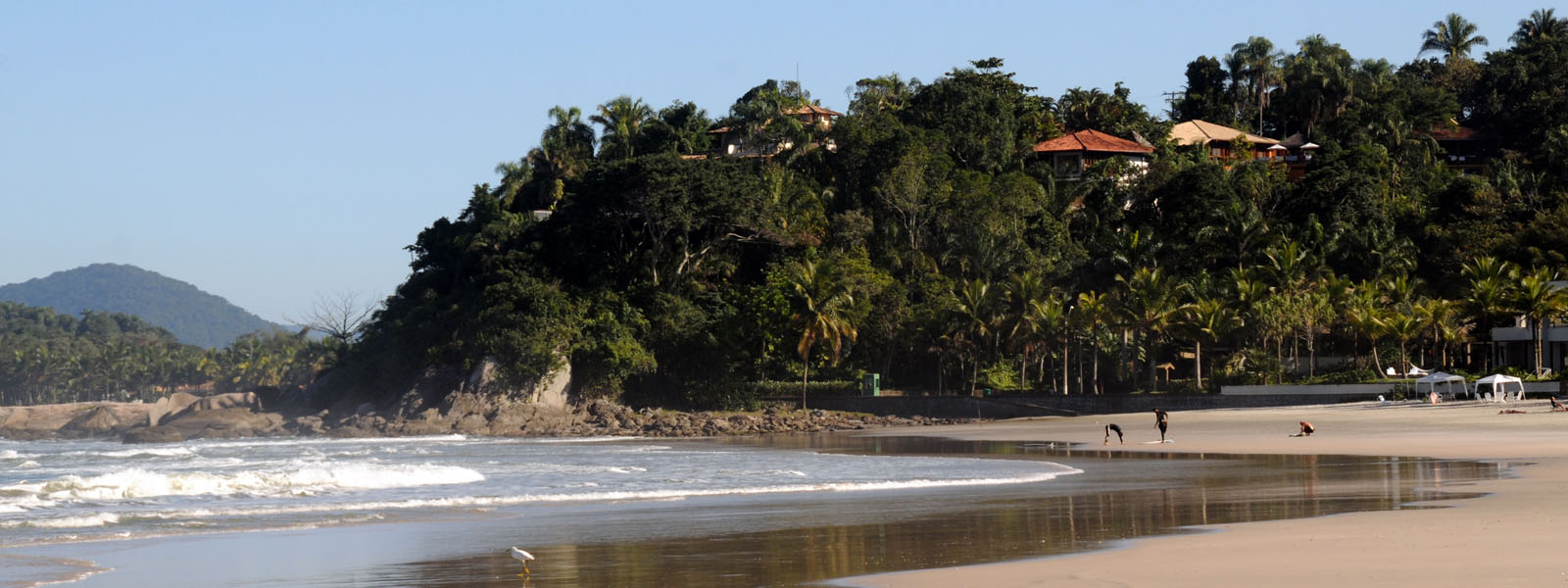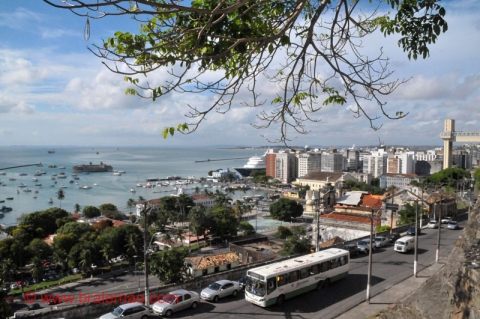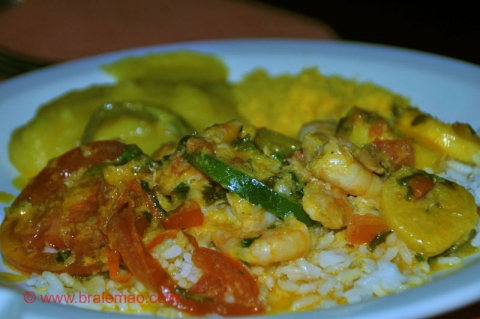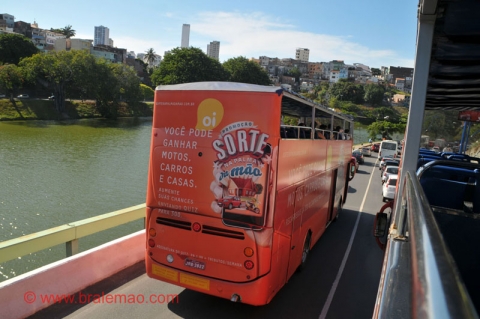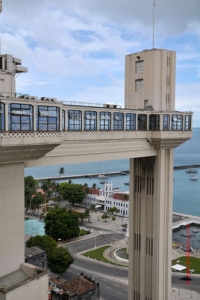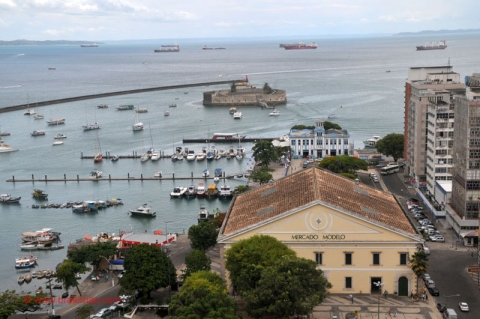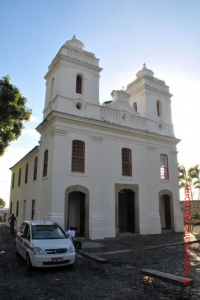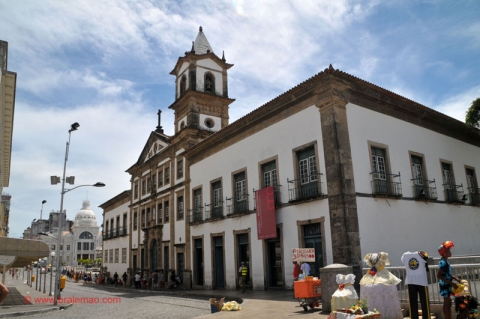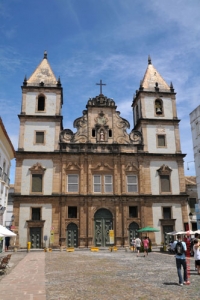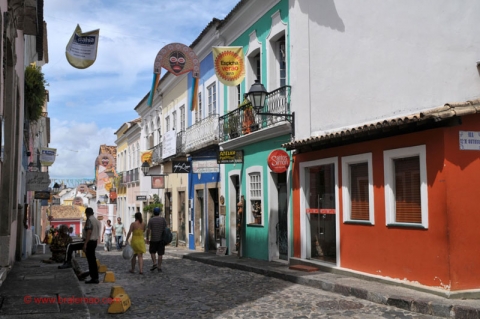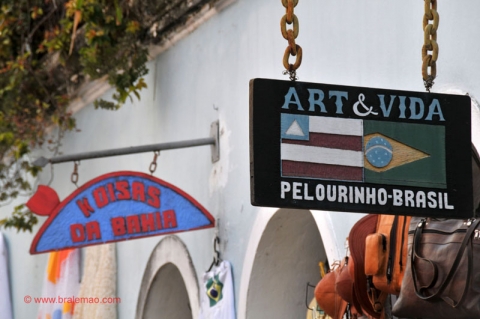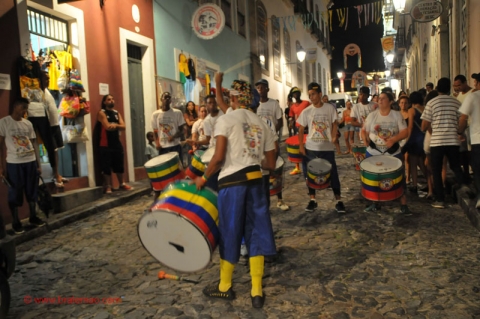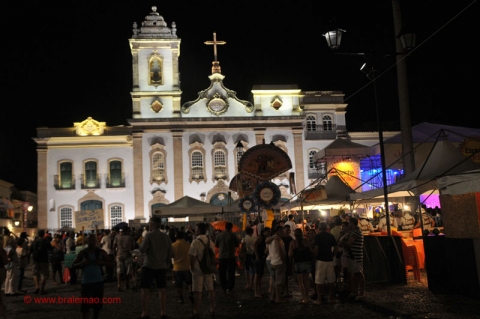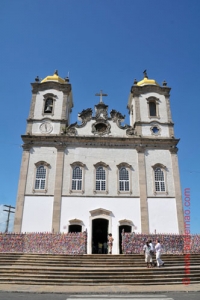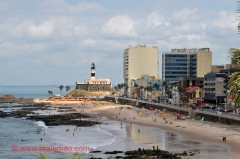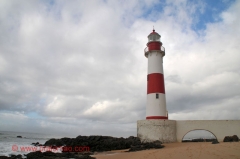The former and complete name of the city of Salvador was São Salvador da Bahia de Todos os Santos („City of the Holy Saviour of the Bay of All Saints“). The name of the bay remembers that the place had been discovered on All Saints‘ Day – by the famous Amerigo Vespucci. Salvador also was called Bahia or Salvador de Bahia. The first settlement was founded in 1500 and since March, 23rd of 1549 Salvador is city. It is one of the oldest cities in the Americas and after São Paulo and Rio de Janeiro the most populous of Brazil, until 1763 it the Brazilian capitol.
In 1551 the first slaves lived in Bahia and they were the base of the african influence of the city until today. There is hardly another city in Brazil, that has a higher percentage of black inhabitants. The slaves let Salvador grow rapidly and made it rich. Until 1650 it was the largest metropole of the southern hemisphere. The slaves worked mainly on the sugar plantations in the region. The first bloom of Salvador ended when Rio de Janeiro became the capitol of Brazil in 1763. In the following decades there were several revolts against the Portuguese crown, fighting for a better life of the colonialists and also for the freedom of the slaves. [more about the history in Wikipedia]
Cuisine
Bahia is famous for its cuisine, with its strong african influence, based on shrimps and fish and it is very spicy. Besides chilis the Bahian kitchen uses a lot azeite de dendê, an oil extracted from a palm tree, that was imported from West Africa during colonial times [more about the oil]. Also milky coconut juice has its place in the kitchen.
Famous dishes which you should try are the brazilian fish or shrimp stew moqueca [a recipe], acarajé and abará. Acarajé is a dish made from peeled black-eyed peas formed into a ball and then deep-fried in azeite de dendê [ more about the oil/recipe]. Abará is also made from peeled black beans, but wrapped in banana leaves and steamed [recipe]. Both, acarajé and abará you can try at many places in the city, also along the beaches. Further, there are many other typical dishes to taste, most of african or slavery influence.
Tourist attractions
To have an overview of the city we suggest to make a city tour by Salvador Bus. You need to make a reservation which is possible to do at your hotel. In the morning you will be picked up nearby or directly at the hotel for a 4-5 hour tour with some stops at tourist attractions. [Link to Salvador Bus].
The main attractions are the Lower City (cidade baixa) and the Upper City (cidade alta). Both are connected by an elevador, the 70m (about 200 ft) high „Elevador Lacerda„. It was the first one installed in Brazil (1873) and has been upgraded several times. As the center of the city at that time was in the Lower City and the suburbs in the Upper City grew, the family Lacerda wanted to connect both to offer a better access to the comercial center of Salvador. It began with two hydraulic cabins for 23 persons each, in 1907 the electrification of the elevator was done. In 1930 the two cabins were replaced and a tower was constructed in front of the elevador with two more cabins, which is the famous landmark of Salvador today.
The Lower City (Cidada Baixa)
Here the city has its origin, from the beginning it was a place of commerce and trade. Until the 18th century there was only one street, then the area was enlarged to have more space. Going to the left when leaving the Elevador Lacerda there is the church Igreja Conceicão da Praia (1739), which was formerly directly at the beach. Today many of the old buildings are in a very bad condition, some are ruins, some meanwhile being restorated.
The main attraction, close to the harbor, where the cruise ships stop, is the market hall Mercado Modelo [site in English | site in German]. The inauguration was in 1912 and was the central place of the city to buy food, pepper, cigars, cachaças etc. Today it is especially a market for handcrafts and souvenirs, more than 260 small shops offer enough for you to find something to remember your stay in Salvador. Also there is a restaurant in the first floor and one at the rear entrance, where some people show the capoeira, which is a martial arte of music and dance [more in wikipedia and a video] . Behind the Mercado Modelo is the place from where ferries and boats leave to the island Ilha de Itaparica and to Morro de São Paulo.
After about 15 minutes by foot from the mercado modelo, passing the church Igreja Conceicão da Praia you arrive at the Solar do Unhão. The place at the waterfront offers you a wonderful view and consists of some preserved heritage buildings of an old sugar mill, dating back to the 18th century. Today the buildings as also the chapel are part of the Museu de Arte Moderna da Bahia (museum of modern art of Bahia), with more than 1,000 artworks, a part of them exhibited in the Parque das Esculturas (park of sculptures). On Saturdays at 6 pm there is a live jazz performance, a good chance to spend a happy hour there during sunset [site of the museum in Portuguese].
The Upper City (Cidade Alta)
In the Upper City, close to the elevador, is Pelourinho, the most famous tourist attraction of Salvador, which is world cultural center by UNESCO since 1985. Pelourinho means pillory and formerly there was one where especially slaves were tied and whipped, but also other citizens were punished and exhibited because of a deed. It was the first slave market in the New World, from were African slaves were sold to work on the sugar plantations. Many years nobody cared about the neighborhood and it degenerated into a slum. From 1991 the inhabitants were relocated to new suburbs outside Salvador and Pelourinho was renovated. Today there live many artists such as filmmakers, musicians, painters and writers, there are hotels and pousadas (guest houses) and it is visited by unnumerous tourists. Each street has something to see, it offers many shops with souvenirs and clothing, restaurants, bars and night life. Police patrols ensure safety. [Pelourinho in wikipedia]
One of the many significant buildings is the Faculdade de medicina da Bahia (Medical School of Bahia). The building was founded in the colonial period and here lived the jesuits until they had to leave Brazil in the 18th Century. Only four blocks away is the another important historic Brazilian monument, the Convento e Igreja de São Francisco (São Francisco Church and Convent). The Franciscan Order arrived in Salvador in 1587 and soon built the first convent and church, which was destroyed during the Dutch invasion. The construction of the new baroque convent and church began in 1686 and is famous for its decoration inside. Nearly everything is covered by gold, it is said that nearly one ton of gold was needed. Some lower parts of the walls outside the church are covered with blue-white tile (azulejo), made in Lisbon. [more in wikipedia].
A tip for dinner in Pelourinho is the Restaurante Escolar. There young people receive a training as a waiter. Every evening they have a buffet with all typical dishes of the region.
Olodum is a percussion band in Salvador founded in 1979, fighting to combat racism, to encourage self-esteem and pride among Afro Brazilians. They performed on the album The Rhythm of the Saints of Paul Simon in 1990 and 1995 Michael Jackson recorded the video of his single „They Don’t Care About Us“ with them in Pelourinho. In the summer they play every Tuesday night in Pelourniho. Often there are other bands playing while walking through the streets of Pelourinho in the evening, too. Sometimes with members of Olodum. Olodum has a store in Pelourinho, where they sell souvenirs and their cds [more about Olodum and their records in English].
Other attractions in Salvador
The church Igreja Nosso Senhor do Bonfim (Church of Our Lord of the Good End) was built in the 18th century on the Montserrat hill on the peninsula of Itapagipe. For the catholics in Salvador it is the most important religous center of Bahia. The christ statue Nosso Senhor do Bonfim and Nossa Senhora da Guiacame came from Portugal in 1745. The church with fassades in a Rococo (late Baroque) design was built to house the statues and was inaugurated in 1754. The Bonfim Brotherhood built houses in the square in front of the church to house the pilgrims that came to Salvador every year to honour Our Lord of Bonfim in the 19th century.
Not far from the Igreja Nosso Senhor do Bonfim (Salvador Bus stops here during the tour) is the Hospital Santo Antônio, where the Catholic Franciscan Sister Irmã Dulce Pontes (1914-1992) began to help the poor in a chicken yard in 1949. She started several projects to give people access to medical treatment and education and had been nominated for the Nobel Peace Prize and was candidate for sainthood in the Catholic Church. [more in wikipedia]
Farol da Barra
The lighthouse Barra (port.: Farol da Barra) – official name Forte de Santo Antônio da Barra – is a lighthouse at the entrance of the bay „Baía de Todos os Santos“ in the neighborhood Barra in Salvador. It is built inside the fort „Forte de Santo Antônio da Barra“ from 1698 and constructed in 1839, known as the oldest lighthouse in the Southern America. The place is well known as it is one of the few locations in Brazil where it is possible to see the sunset over the ocean. Inside the fort there is a small nautical museum, the Museu Náutico da Bahia, and a café.
Rio Vermelho
To the neighborhood Rio Vermelho you should go one evening to eat one of the most famous Acarajé or Abará. At the Largo de Santana, Dinha and Regina have there territorries marked in front of some bars. So you can buy the food and sit down at a table of the bars, where the waiters serve drinks.
Beaches
Salvador has about 35 kms (22 mls) of beach along its coast, beginning in Barra and ending in Flamengo. Along the promenade there also is a main street, so that you will need quite some time to get to the further beaches at the weekend or during the rush hour.
Other tours
By boat you can make a tour to Ilha de Itaparica, the island on the other side of the bay [video]. It is 10 kms away from Salvador and the boats to there leave behind the Mercado Modelo. It is worthwhile going there, leaving the noisy Salavdor behind and passing some time in the small villages on the island.
Also from the same place in Salvador the boats leave for Morro de São Paulo on the island Ilha de Tinharé. The boats need about 2 1/2 hours and the departure is between 9 am and 13 am. The island is a well known place for its beaches and natural pools. Also the village is worth a stay as there are no cars – only a few are allowed to be used on the island to connect the places outside of the village of Morro de São Paulo.
Galleries
Salvador
Historic Pelourinho
Video of
Capoeira
